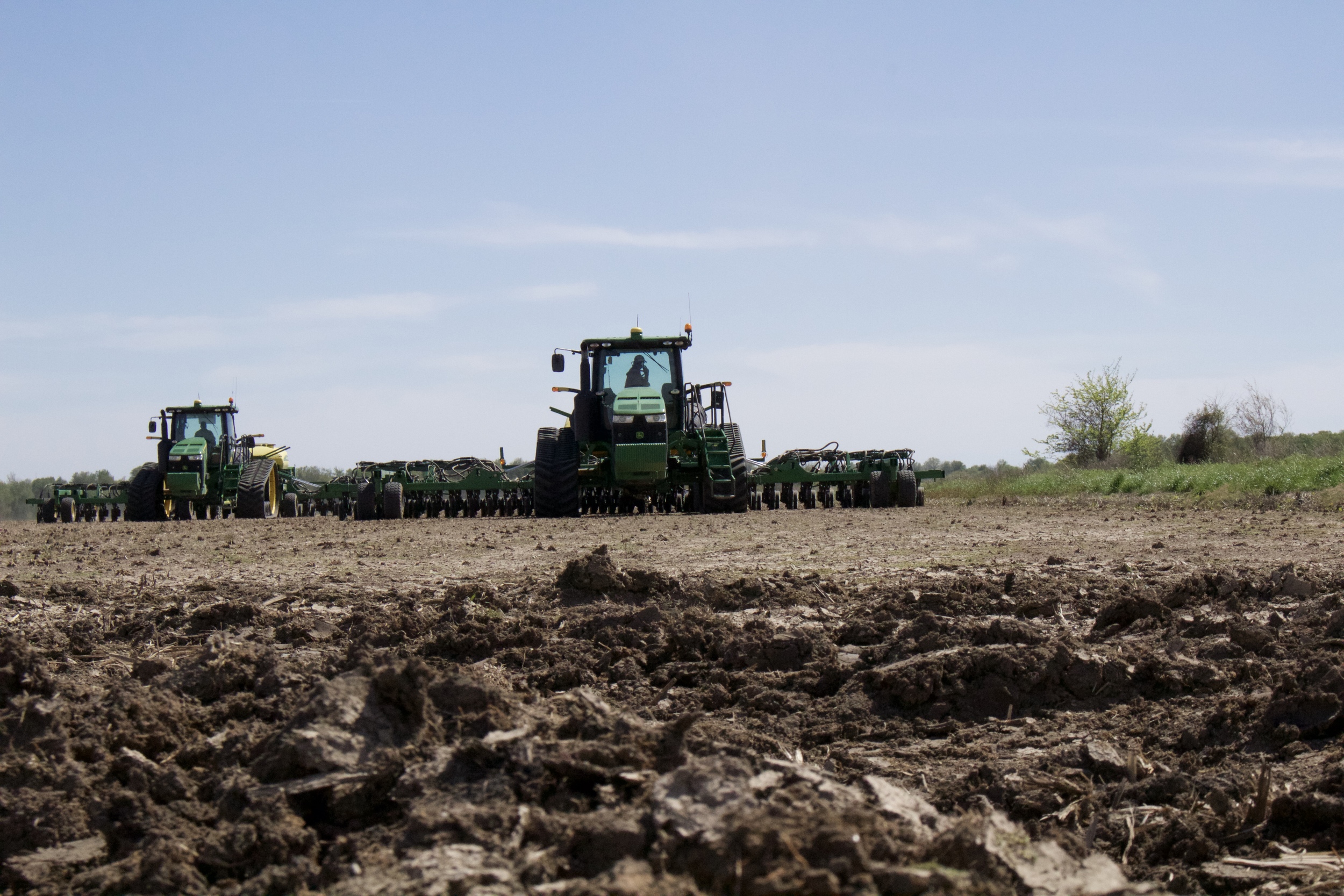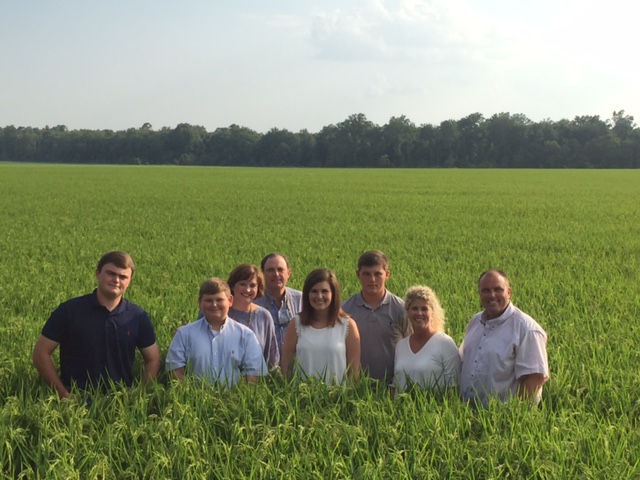I’ve got great news for the world! Have you heard of carbon credits? A carbon credit is a cash incentive that an organization can receive for reducing its annual Green House Gas emissions. Did you know that the State of California will issue carbon credits to any organization in the US that gives evidence of lowering its Green House Gas emissions?
Tractors planting rice Photo Credit: Morgan Baugh
A New Category
Maybe that’s not news to you, but did you know that, originally, California did not include agriculture as a category that could receive carbon credits? This hurdle didn’t stop one group of forward-thinking Arkansas farm families from proving that the efforts they are making on their land should be recognized by California and many other groups around the country.
The Whitaker family
Promoting Current Processes
Mark Isbell wrote in a recent article about ways that rice farmers in the mid-south region of the United States are developing practices to decrease their carbon footprint. Nature’s Stewards is a group of families that are quantifying their carbon-reducing methods in the areas of water reduction, decreased fuel usage and intermittent flooding in rice fields for the purpose of receiving carbon credits from California. The Whitakers, Isbells and Sullivans are all successful farming families throughout the state of Arkansas. They have formed a group to validate the extra effort that many farmers around the country are making in order to preserve the environment while feeding the world’s growing population.
My dad and nephew in front of a well that supplies the water to surrounding rice fields
The Way We've Always Done It
For hundreds of years, rice farmers around the world have understood the only way to grow rice is in a “continuous flood” environment. Whether using contour levees or leveling their land to a precise grade, farmers have maintained 3 - 5 inches of water through the plant’s growing season and then drained the water just before harvesting.
Planting rice in a zero grade rice field Photo Credit: Morgan Baugh
Unavoidable Sources
Motivated scientists have discovered many specific sources of Green House Gases. Some originate from unavoidable, nature cycles based on the earth’s design, while others are derived from humans. Because methane is released when soil that is full of organic material is flooded, rice fields have, historically, released a large portion of the carbon emissions into the atmosphere.
Kids playing in a rice field that is being flooded
Do We Have to Do It the Way We've Always Done It?
Seeing the need to do their part to sustain the environment while feeding the world, Nature’s Stewards are perfecting a new method called alternate wetting and drying (AWD). Instead of maintaining the same water level throughout the growing season, these farmers are halting their irrigation mid-season which allows the soil to dry for a brief period of time. Water is soon re-applied in order to preserve the crop.
Water seeping across a rice field
Surprise Benefit
The Sullivan family, one of the families involved in Nature’s Stewards, has been implementing AWD for several years for the purpose of water conservation. They have seen a 30% decrease in overall water consumption. While this is great news for the environment, that’s not even the best part of it. By interrupting the continuous flood in mid growing season, the Green House Gas emissions are reduced by up to 1 ton per acre!
Jim Whitaker reading a water gage that documents how many gallons are used
Documentation
Proving this enormous emissions reduction has given Nature’s Stewards credibility in the carbon market. During the 2016 growing season, they are keeping copious records of the water levels, tractor hours operated, and the amount of pesticides used on their lands. The pioneering families in Nature’s Stewards have been able to significantly reduce the carbon emissions in each of these areas.
The next generation
More to Come
While rice is the first crop to officially enter the carbon market, these innovative farmers hope that other agriculture professionals will be encouraged to develop and document creative processes which they are implementing so we can pass-on a thriving environment to our children and grandchildren. We would all love to look back in a few years and see that this was just the first of many steps the field of agriculture took into the carbon market. Nature's Stewards are inviting all farmers to ask the question, "How can I do my part?" even if it has never been done before. If more families follow their lead, we will soon have more great news for the world!








